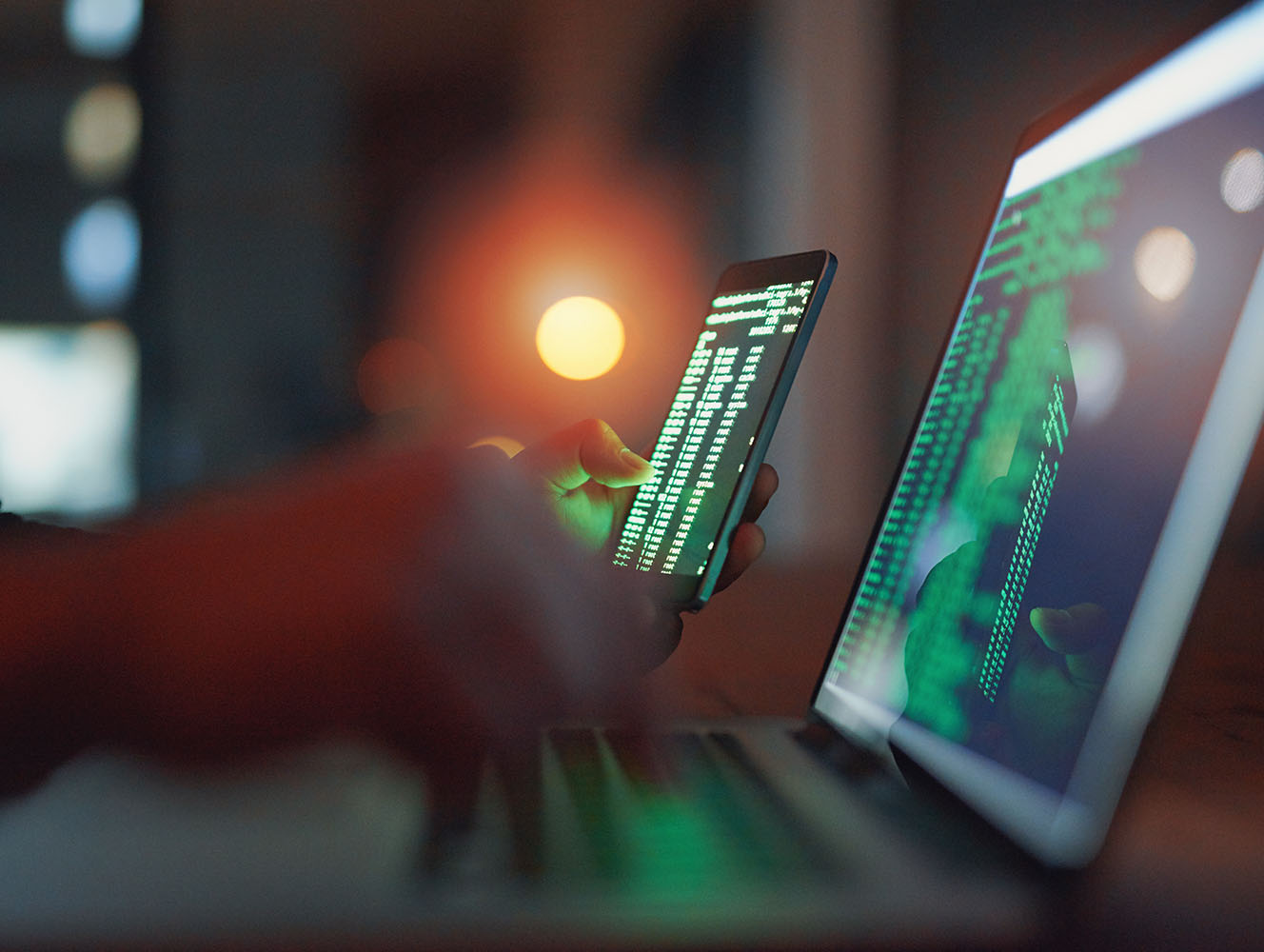Generative AI: is its output protectable by intellectual property rights?
Published on 8th June 2023
Creative AI engines can create new text, images, video and audio. Is there IP in this content and, if so, who owns it?

Generative artificial intelligence (AI) is able to create content in response to an input prompt. This may involve generating answers in text form in response to a question, or an image or piece of video in response to a text prompt. Generative AI is a form of machine learning that has been trained on vast quantities of data and has mapped patterns across the data, enabling it to generate similar data that is often very difficult to distinguish from content created by a human.
Our previous articles have considered the intellectual property (IP) issues in relation to the input training data for generative AI – the risk of infringement, possible exceptions and potential reforms. But what about its outputs? Can they be protected by IP rights – and if so, who owns them?
Copyrightability: the UK
Existing UK copyright law protects original literary, dramatic, musical, and artistic (LDMA) works, as well as films, sound recordings, broadcasts, and published editions (so called "entrepreneurial works").
For LDMA works to be original, the work must be the author's own intellectual creation. Copyright protection for LDMA works lasts for the author's lifetime, plus an additional 70 years. Where an LDMA work is created by a human with assistance from AI then, provided the work expresses original human creativity, the AI will be treated as a tool. The work will receive copyright protection much like any other LDMA work and the rights will belong to the human author.
However, the UK also provides for copyright protection for LDMA works generated entirely by computers, again, providing the originality threshold is met. Generative AI may put this originality threshold under pressure. Machine learning systems are dependent on their training data. An image-making generative AI system might create a digital image of an apple but it would be shaped by the images of apples in its training data. It is untested whether this would undermine claims to originality.
Where the originality threshold is met, the "author" of such a computer-generated LDMA work is considered to be "the person by whom the arrangements necessary for the creation of the work are undertaken". Protection lasts for 50 years from the date the work is made – notably shorter than the protection received when AI is used as a tool by a human creator.
Entrepreneurial works, in contrast to LDMA works, do not need to be original but the rights are narrower and usually shorter, depending on the work in question. For example, sound recording protection only extends to a specific recording of a song and lasts for 70 years from creation. These rights could apply to AI outputs. For example, if AI generates a song and records that song in the process, the individual who took the necessary steps to have the AI generate and record the song is likely to be the producer and so would have a sound recording right.
A recent consultation conducted by the UK Intellectual Property Office on AI and IP considered whether to reform copyright protection of computer-generated works. It concluded that, for the time being, no changes were necessary but will monitor the suitability of existing protections as AI develops further.
Copyrightability: the EU
In contrast to the UK, the EU does not offer copyright protection for AI-generated creative works. The Court of Justice of the European Union has not considered the copyrightability of computer-generated works, but has confirmed that copyright protection requires some form of human input because it must reflect the author’s personality. The creative work could involve assistance from AI, provided that the human input meets the originality/creativity requirement.
However, purely computer-generated works, by definition, lack any form of human contribution and are, as such, not eligible for copyright protection. A computer program may be copyrightable, but any works it autonomously creates would not be.
AI-produced output might be protected by related or neighbouring rights, such as sound recording rights (that is, phonographic rights), rights of film producers and so on. For example, phonographic rights enjoy rights of reproduction, distribution and communication to the public. Provided that the definition of a "phonogram" is met by an AI output, then phonographic rights might be available. Where recordings are generated by AI, the right will be allocated to the producer of the phonogram. This will most likely be the user of the AI software, as opposed to the AI developer, as the user will trigger the act of fixation (a necessary requirement to meet the definition of "phonogram") by deploying the AI system.
Patentability: the UK
In the UK, the Court of Appeal has held that an AI system cannot be an "inventor" for the purposes of filing a patent. Nor is the owner of an AI machine entitled to a patent for a machine-made invention when stating the machine was the inventor. This decision (part of the coordinated global DABUS litigation to test the limits of patent law with respect to AI-generated inventions) has been appealed. The Supreme Court's decision is expected before the end of September 2023.
This dispute has taken place against the backdrop of the UKIPO consultation on AI and IP. Although no change to UK patent law is currently planned, the government aims to advance AI inventorship harmonisation discussions in international forums and develop a clear picture of what the UK should seek in any harmonisation discussions.
However, human inventors are not prevented from patenting inventions where AI has been used as a tool – a point highlighted in the UKIPO consultation.
Patentability: the EU
Likewise, in the EU, inventions generated by AI are not presently patentable. In a further iteration of the DABUS litigation, the European Patent Office (EPO) rejected the notion that an AI system can be regarded as an inventor. Only humans can be named as inventors on a patent application. An invention generated autonomously by an AI system without human involvement will not be attributed to any inventor (not even the owner of the AI) and will not be patentable.
Again, inventions involving AI as a tool will be considered computer-implemented inventions. Although the European Patent Convention excludes computer programs "as such" from patent protection, inventions involving software can nonetheless be patented provided that they have a technical character, that is – the invention produces a technical effect serving a technical purpose. This could include providing a medical diagnosis by an automated system processing physiological measurements, for example, using a neural network in heart monitoring apparatus to identify irregular heartbeats.
Autonomous or tool?
The fact that generative AI is trained to produce outputs that reflect the training data means that it could be seen as inherently neither novel nor inventive – indeed, such systems have been called "pastiche machines", or "stochastic parrots".
On the other hand, it is not unheard of for machine learning systems to generate outputs that humans had not anticipated. Something that appears to be "wrong" at first sight may prove to be a new approach or idea that works. A famous example is the AlphaGo Zero AI system that beat the human world champion using a move that no human had thought of in centuries of playing the game. It is not, therefore, out of the question that, asked about how a particular process might be improved or undertaken, or asked for a design for a tool to address a defined problem, a generative AI system could come up with content that could, if created by a human, be protected by IP rights.
On balance, though, the fact that a generative AI output is not produced without a (human) input may weigh in favour of considering it to be a tool and not an autonomous creator or inventor.
Ownership and royalties for training data rightsholders?
Where IP-protected works are licensed for training purposes, licensors might consider including terms transferring ownership interests in the generative AI output and any associated IP rights or seeking royalty streams on any profits made from the outputs. Quite how this might work in practice remains to be seen. It is possible that the UKIPO will touch upon this issue in the planned code of practice between rightsholders and AI firms on accessing IP protected content.
Osborne Clarke comment
The development of generative AI is rapidly improving, posing problems for the law in being able to keep pace, not least in relation to the protectability of generative AI output. As explored above, copyright protection may be available in the UK but not in the EU.
With respect to the patentability of AI-generated inventions, the position in the UK (pending the Supreme Court's DABUS judgment) and the EU is that it would be very difficult to secure a patent unless the AI can be shown to be a tool used by a human inventor.
The potential IP protection afforded to generative AI outputs is garnering attention beyond the UK and EU. For example, the US Patent and Trademark Office recently issued a request for comments on AI and inventorship, particularly concentrating on whether the law provides protection for AI-generated inventions.
There are concerns regarding the extent to which creative industries will be affected by the increasing availability and speed of generative AI tools. Inevitably, a balance will need to be struck between the development of AI technology and maintaining a robust system of IP protections that respects rightsholders' interests. The current UK government's direction of travel is not yet clear.





